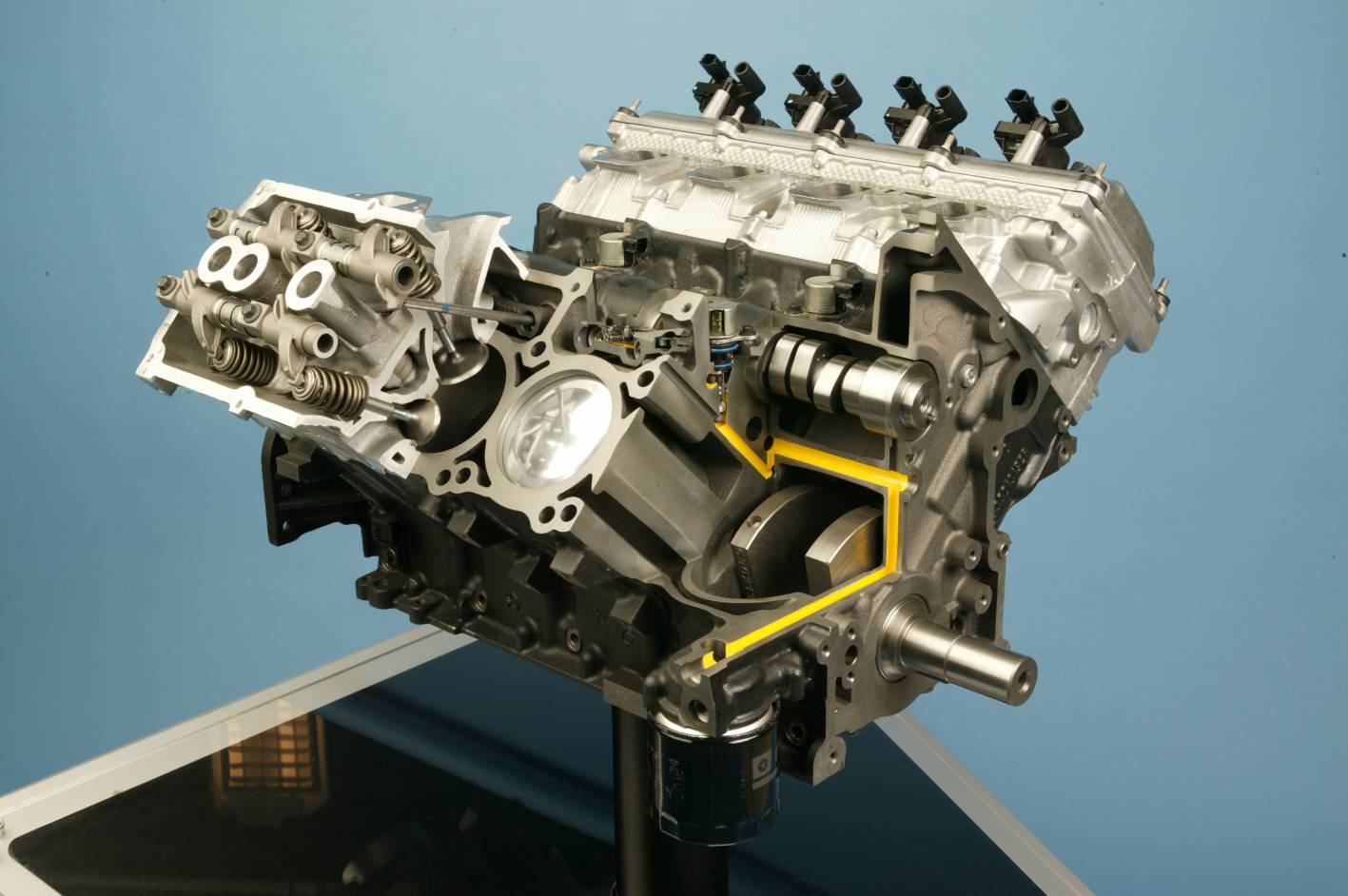Introduction
First introduced in 1993, Toyota’s 1KZ-TE was a 3.0-litre turbo-diesel four-cylinder engine. Key features of the 1KZ-TE included its alloy cast iron block, aluminium alloy cylinder head, single overhead camshaft, two valves per cylinder, drive-by-wire electronic throttle control and indirect injection. Furthermore, the 1KZ-TE engine had a 4400 rpm redline.
For Australia, the 1KZ-TE engine was first introduced in the 1997 Toyota Mk.6 Hilux. For the 90-Series and 120-Series LandCruiser Prado, in which the 1KZ-TE produced 96 kW, the engine was fitted with an air-to-air intercooler.
| Engine | Trans. | Years | Peak power | Peak torque | |
|---|---|---|---|---|---|
| Toyota Mk.6 Hilux | 3.0-litre turbo-diesel I4 | 5sp man. | 1997-00 | 85kW at 3600rpm | 295Nm at 2400rpm |
| 2000-05 | 85kW at 3600rpm | 315Nm at 2000rpm | |||
| Toyota 90-Series LandCruiser Prado | 3.0-litre turbo-diesel I4 | 5sp man., 4sp auto |
2000-02 | 96kW at 3600rpm | 343Nm at 2000rpm |
| Toyota 120-Series LandCruiser Prado | 3.0-litre turbo-diesel I4 | 5sp man., 4sp auto |
2003-06 | 96kW at 3600rpm | 343Nm at 2000rpm |
1KZ-TE block
The 1KZ-TE engine had a deep-skirt, externally ribbed, linerless cylinder block that was made from wear-resistant alloy and cast iron. The 1KZ-TE engine had 96.0 mm bores and a 103.0 mm stroke for a capacity of 2982 cc. Furthermore, the cylinder bores were ‘plateau honed’ for more efficient piston ring sealing.
Crankshaft, connecting rods and pistons
The 1KZ-TE engine had a fully balanced steel crankshaft that had five journals and operated on aluminium alloy bearings.
The connecting rods were made from lightweight carbon steel and each rod had an internal oil passage which supplied an oil gallery in the piston. The small-end connecting rod bearings were tapered to reduce mass, while the big-ends had plastic region tightening bolts to maximise clamping force
The pistons were made from aluminium alloy and a FRM (fibre reinforced metal) top ring groove to improve wear resistance.
Balance shafts
The 1KZ-TE engine had twin counter-rotating balance shafts within the crankcase to cancel the secondary inertia forces that were inherent in an in-line four-cylinder engine. Since each piston reached its maximum speed – both rising and falling – at a point just above the centre of the stroke, the upward inertial force of the two rising pistons was greater than the downward inertial force of the two falling pistons. To offset this, the twin gear-driven balance shafts counter-rotated at twice the speed of the crankshaft.
Cylinder head
The 1KZ-TE engine had an aluminium alloy cylinder head with a cross-flow configuration. The cylinder head was mounted on a steel laminate type head gasket and had plastic region tightening bolts to maximise clamping force. The cylinder head cover made of resin for its lightweight and noise absorption properties. Inside the cylinder head cover, a baffle plate and camshaft cover reduced engine oil consumption by reducing gas blow-by.
Turbocharger and intercooler
The 1KZ-TE engine had a water-cooled Toyota CT12B turbocharger. For the 96 kW output 1KZ-TE engines, an air-to-air intercooler was used; its dimensions were 320 mm by 230 mm by 65 mm.
Camshafts and valves
The 1KZ-TE engine had a single overhead camshaft (SOHC) that acted directly on the valves. The camshaft had a ‘gear and belt drive’ in that it was driven by timing gears to the injection pump gear, then a toothed rubber belt (which had an automatic tensioner and a belt idler).
The 1KZ-TE engine two valves per cylinder: one intake and one exhaust. As per the table below, the 1KZ-TE had 9 degrees of overlap, intake duration of 218 degrees and exhaust duration of 236 degrees.
| 1KZ-TE Valve Timing | ||
|---|---|---|
| Intake | Open | 6° BTDC |
| Close | 32° ABDC | |
| Exhaust | Open | 53° BBDC |
| Close | 3° ATDC | |
Injection and combustion
The 1KZ-TE engine had electronically controlled, indirect fuel injection via fuel injection nozzles that had a double-cut needle. Fuel was supplied to the injectors via a Denso ‘Generation 3’ (ECD-V3-Rom-D) vane-type fuel pump which featured a spill control valve, timing control valve, fuel temperature sensor, engine speed sensor and correction PROM (Programmable Read Only Memory).
The 1KZ-TE engine had swirl type combustion chambers with ceramic-tipped glow plugs. Furthermore, the 1KZ-TE engine had a compression ratio of 21.2:1; the firing order was 1-3-4-2.
2003: 1KZ-TE upgraded for 120-Series LandCruiser Prado
For the 120-Series LandCruiser Prado, the 1KZ-TE was improved with the introduction of a lighter aluminium sump and electronic throttle control; an intercooler protector was also fitted for durability.
1KZ-TE Problems
1KZ-TE: Overheating
Overheating of the 1KZ-TE engine requires urgent attention since it can cause the cylinder head to crack. Overheating may be caused by:
- Failure of the viscous fan hub – this is generally noticed by temperatures rising when ascending hills or during stop/start traffic on hot days;
- Blockage of the radiator;
- Seizure of the wastegate actuator resulting in overboost;
- A hole in the heater hose; and,
- Too much load on the cooling system – a worn torque converter may contribute to this.
To improve the cooling system, common modifications for the LandCruiser Prado upgrading the radiator and fitting larger exhaust systems.
1KZ-TE: Cracked cylinder head
As a result of overheating, the 1KZ-TE is susceptible to cracked cylinder heads. Symptoms of a cracked cylinder head include:
- Small bubbles in coolant system, pushing coolant into the overflow bottle;
- Consumption and discolouration of coolant;
- Rapid overheating;
- Rough running; and,
- A loss of power.
If the cylinder head has cracked, the turbocharger is susceptible to overheating – this may cause excessive movement of the shaft and allow the blades to hit the housing. It is recommended that the cylinder head be replaced with a genuine Toyota head since there have been reports of casting faults in non-genuine products.
Please note that pressure testing the cylinder head does not always reveal a problem.




